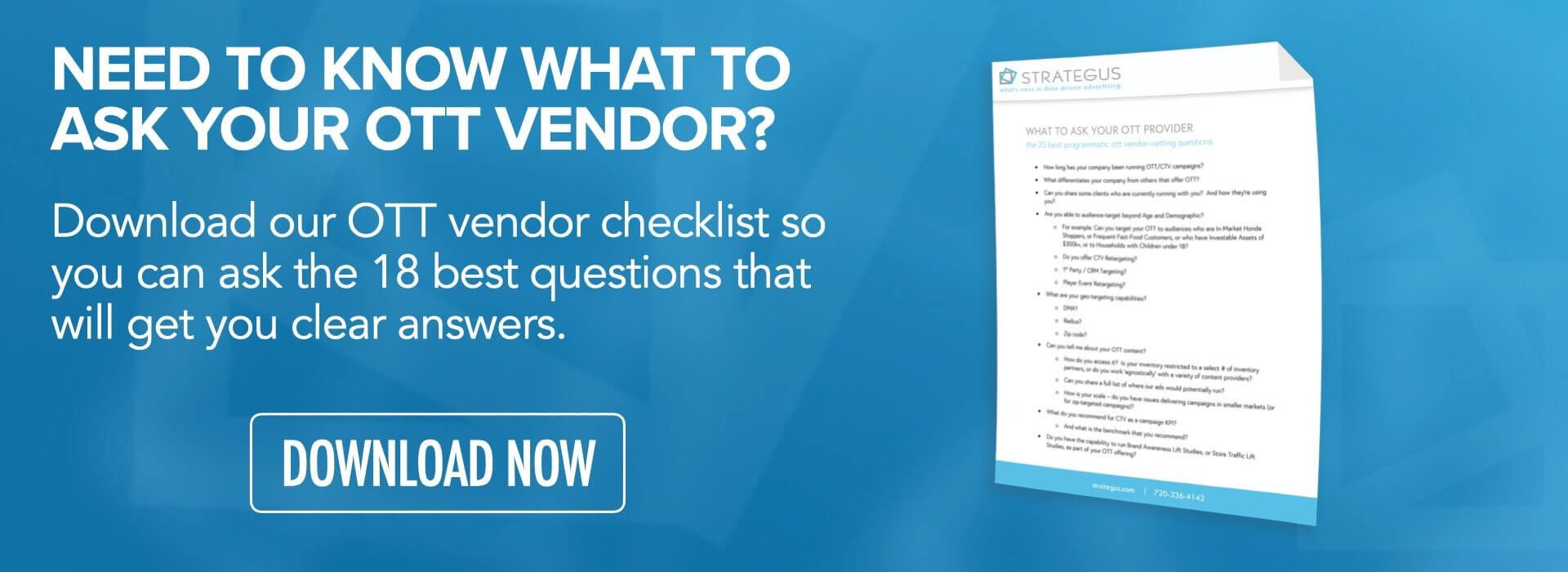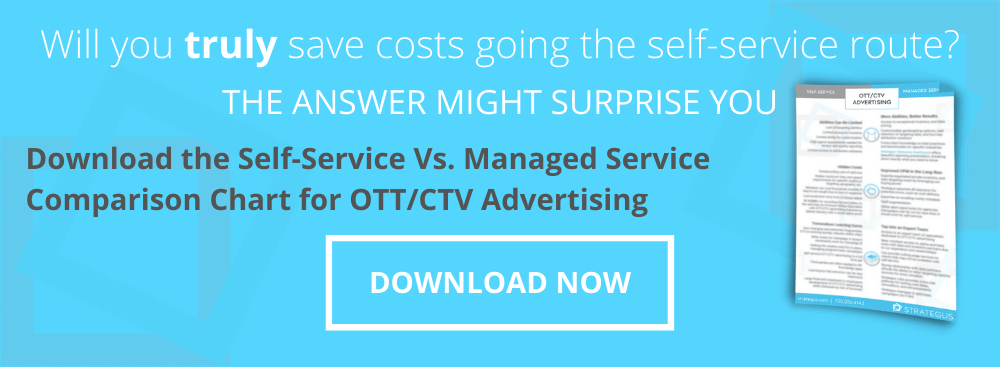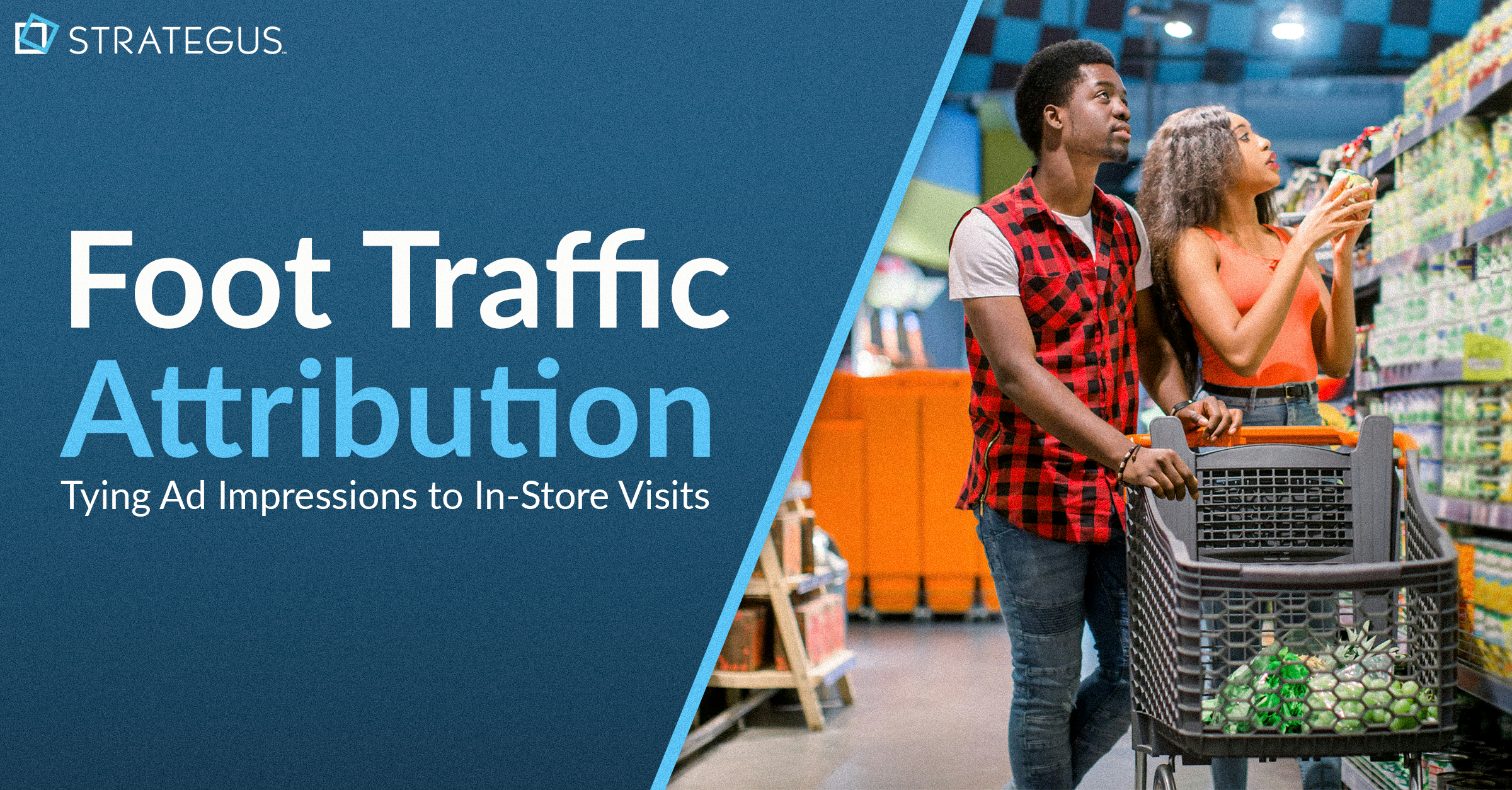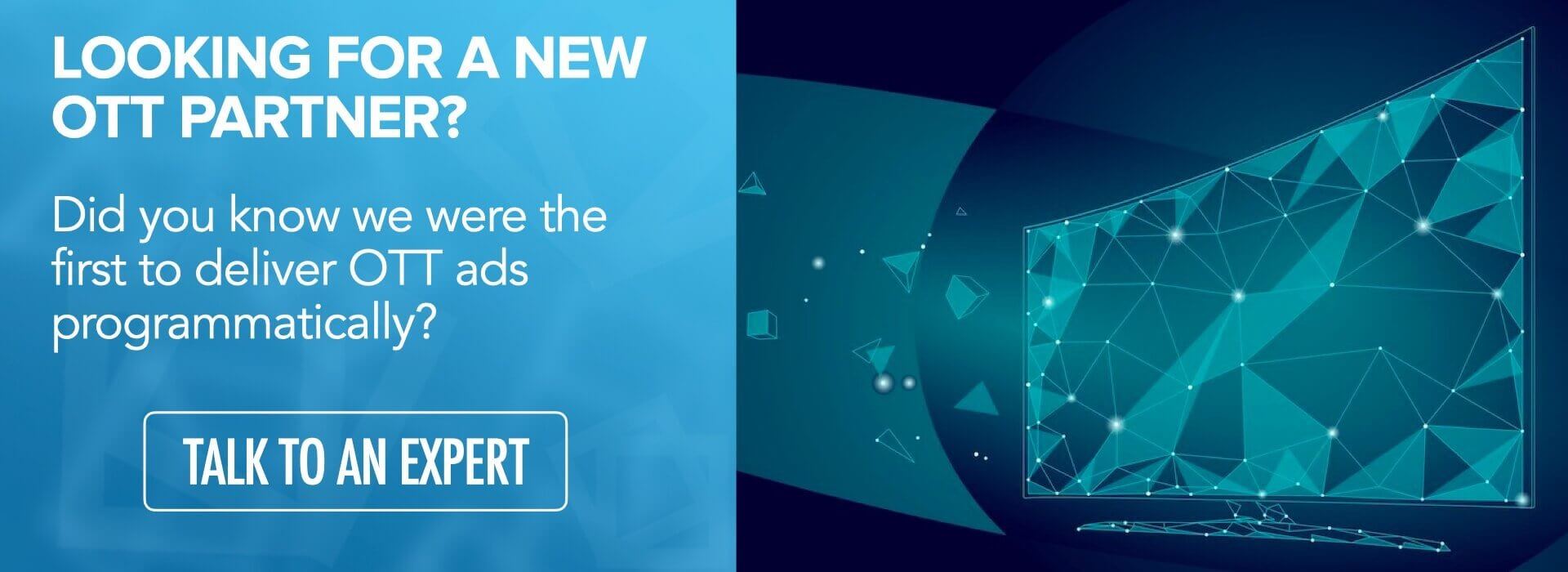- Home
- Strategus Blog
- The Comprehensive Guide to Understanding Omnichannel Marketing
The Comprehensive Guide to Understanding Omnichannel Marketing
 Andy Dixon
Andy Dixon
10 minutes read

It wasn’t long ago that multichannel marketing was the up-and-coming tactic that advertisers and marketers were urged to perfect. But as everyone in the industry knows, the latest and greatest advertising and marketing tactics are always evolving.
Enter omnichannel marketing. The strategy takes all of the good things from multichannel marketing and adds in the missing piece of the puzzle — customer experience. Understanding exactly what omnichannel marketing is — and what it isn’t — is far more complicated than that, though.
That’s why our team at Strategus has compiled this ultimate guide to omnichannel marketing. In this post, we will cover multiple aspects of omnichannel, including:
- What Is Omnichannel Marketing — And Why Is There So Much Disagreement?
- What’s The Difference Between Omnichannel And Multichannel Marketing?
- Omnichannel Vs. Multichannel: The Buyer, The Media, And The Methods
- How To Use Our Encore Omnichannel Marketing Strategy In The World Of OTT
- Choose Your Adventure: Omnichannel vs. Multichannel E-commerce Advertising
- Tailoring The Advertising Experience: Why Omnichannel Is Important

What Is Omnichannel Marketing?
One search on Google may reflect dozens of different iterations of the term and what the implementation of an omnichannel campaign looks like. Though frustrating, there’s a reason behind that.
When any new strategy is implemented, it takes time for it to become standardized, and such is the case with omnichannel marketing. Companies are experimenting with different omnichannel tactics based on channels, reach, target audience, product/service offering, and more. Here at Strategus, we have our own take on omnichannel marketing:
Omnichannel marketing is the ability to create a cohesive experience for a buyer throughout all touchpoints with your company by delivering consistent messaging and advertising across the various devices and channels they use on a daily basis.
In essence, omnichannel marketing unifies all marketing and sales efforts so your customers see the same message across each channel.
Regardless of industry, company size, or reach, the need to resonate with buyers is consistent for all marketing and advertising teams. In fact, that need is only increasing in importance as top-tier customer success and client experience become expected of all companies.
With so many different channels available, there is no shortage of ways to interact with potential buyers — CTT/OTV ads, social media, digital display, video, etc. But it’s the ability to create a strategy behind those channels and deliver consistent, unfragmented messaging that sets omnichannel marketing tactics apart from others.
Read our full post to learn more about omnichannel marketing here.
What’s The Difference Between Omnichannel And Multichannel Marketing?
We don’t blame you for struggling to understand the difference between omnichannel and multichannel marketing. After all, they’re both new-age digital marketing and advertising techniques that incorporate the use of multiple channels. However, as we alluded to above, the difference comes down to two major areas:
- Placing the customer as the center of importance
- Delivering consistent messaging across all touchpoints
Multichannel Marketing
Multichannel marketing campaigns utilize many different channels, such as mobile, social media, email, online, etc., to reach potential customers and work them through the funnel. The basic idea behind multichannel marketing is that all of these channels work independently of one another, so the corresponding advertising efforts can as well.
This is a massive improvement from the outdated approach of single-channel marketing campaigns, in which companies could only target prospects through one channel. However, it’s also a far cry from meeting modern buyers’ demands.
Omnichannel Marketing
Omnichannel marketing takes the outdated multichannel tactics to the next level by emphasizing the client experience from their first touchpoint with your company to their purchasing decision and ultimately their continued interaction with your brand as a repeat customer.
To accomplish this, omnichannel campaigns utilize all of the channels that multichannel campaigns do in a more cohesive manner. Omnichannel integrates and aligns with all channels to deliver consistent brand messaging and provide customers with a more unified experience.
Another way to think of omnichannel marketing is reimagining what modern retargeting looks like, something our proprietary Encore Omnichannel focuses on. With this technology, you can serve an ad to a prospect through CTT/OTT advertising, and once they watch it through completion, deliver programmatic ads across multiple devices that they use on a daily basis.
Read our full post on the difference between multichannel and omnichannel marketing here.
Omnichannel Vs. Multichannel: The Buyer, The Media, And The Methods
With a basic understanding of omnichannel marketing and what sets it apart from multichannel marketing, it’s time to discuss three important aspects to further differentiate the two tactics: the buyer, the media, and the methods.
Omnichannel and multichannel approach all three components differently, and when we look at each individually, it’s easy to see why omnichannel campaigns are so much more effective. Before getting into each, consider these statistics from ZoomInfo:
- 90% of customers expect consistent interactions across channels.
- 60% of millennials expect consistent brand experiences — whether in-store or by phone.
- 49% of consumers buy from their favorite omnichannel brands at least once per week.
The Buyer
We know what buyers are asking for in terms of the way companies interact with them, so why not deliver?
That’s what omnichannel marketing does by prioritizing the buyer throughout all stages of the purchasing journey. By delivering consistent messages across multiple channels, brands begin to create trust with prospects without even realizing it. Though well-intended, multichannel tactics can actually have negative impacts on trust by spamming buyers with confusing, unrelated messages.
The Media
Whereas the main goal of multichannel is getting a message out across as many platforms as possible, omnichannel campaigns optimize the messaging and platform being used to create the best results. Encore Omnichannel focuses on three main channels — CTV, video, and digital display — because they are the most used and convertible.
Buyers prefer video and consistently shop online, allowing for optimal usage of video and digital display ads, which are all delivered after a prospect views a CTV ad. Tying together these forms of media separates omnichannel from multichannel.
The Methods
Omnichannel tactics are more strategic in nature because they focus on delivering the right message to the right buyer at the right time. Think about it this way: if the right message is delivered to the right buyer, but they are not in a position to convert, the whole campaign falls. The same goes for delivering an incorrect message or targeting the wrong person. Everything must work together to produce results, and that is only possible with omnichannel marketing.
Read our full post on the buyer, media, and methods associated with omnichannel marketing here.

How To Use Our Encore Omnichannel Marketing Strategy In The World Of OTT
We’ve already introduced our Encore Omnichannel technology and how it drives our omnichannel marketing campaigns, but there’s plenty more to discuss. Essentially, Encore omnichannel is our proprietary retargeting strategy and technology that delivers consistent messages across multiple channels and makes CTV/OTT campaigns as close to clickable as possible.
Omnichannel marketing is almost the polar opposite of traditional spray-and-pray advertising with little direction and reasoning behind the campaign. It’s a driven strategy that reduces the disconnect between devices and enhances customer experience. But what does that really mean? Here’s how Encore Omnichannel works:
- You begin by using first- and second-party data to gain an understanding of your target audience and their household.
- Use that data and their purchasing behavior to target them with a relevant CTV ad.
- After viewing the CTV ad to completion, the target is delivered relevant, clickable ads with calls-to-action on their phones, laptops, tablets, etc. through the Encore Omnichannel campaign enhancer.
- With consistent messaging and communication across multiple channels, you begin to build trust with targets and encourage them to buy.
There are two main benefits of this approach. First, we are able to retarget the right person at the right time. Proper analysis of their data allows us to know they are engaged and ready to buy, giving us the confidence to target them versus another person.
Second, we make unclickable ads clickable, and thus trackable. In the past, it has been difficult to track the success of CTV/OTT advertising because they are unclickable by nature. By repurposing the message and delivering it across channels where users can convert, we are better able to track campaign results.
Read our full post on Encore Omnichannel and CTV/OTT advertising here.
Choose Your Adventure: Omnichannel vs. Multichannel E-commerce Advertising
We can’t discuss omnichannel marketing tactics without diving into the world of e-commerce. COVID-19 forever impacted purchasing decisions as more and more companies turned to digital sales to not just stay afloat, but break into new levels of revenue generation. Whether businesses are opting for only e-commerce sales or supplementing their brick-and-mortar efforts, the fact remains that omnichannel marketing is the most successful campaign tactic.
Multichannel E-Commerce
There once was a time when multichannel e-commerce advertising was not just sufficient, but far and away the best option available. The premise behind it was to expand the single-channel e-commerce efforts — i.e. delivering an ad for your product via display ads, traditional TV ads, social media, and more.
The theory of sending out multiple product promotions across multiple devices is good in theory, but it quickly became apparent that multichannel e-commerce strategies lacked the consistency that consumers demand. From advertising unrelated products to targeting the wrong person entirely, these methods proved unfruitful.
Omnichannel E-Commerce
As a way to correct the mistakes apparent in multichannel campaigns, omnichannel e-commerce advertising has taken the crown as the best e-commerce campaign tactic. While multichannel campaigns cast as wide a net as possible, omnichannel narrows that net down to specific buyers and channels that are more likely to lead to purchases.
The results speak for themselves as companies who have strong omnichannel customer engagement retain an average of 89% of their customers.
Read our full post on omnichannel vs. multichannel e-commerce advertising here.
Tailoring The Advertising Experience: Why Omnichannel Is Important
Any savvy business person understands the importance of competitive advantage. In other words, what makes your product, service, or company stand out from the competition, and why should a consumer choose you with so many other options available?
Omnichannel marketing is crucial when it comes to competitive advantage. It should come as no surprise that brands that create an exceptional customer experience have an immediate competitive advantage over the competition.
When perfected, customer experience shows that you value your target audience, create bonds with them, and ultimately encourage them to buy from you (hopefully repeatedly) and convince others to do the same. On the other hand, a negative customer experience can do the exact opposite and ruin any chances of creating long-term customers.
As we’ve discussed at length, omnichannel marketing is one of the best ways to create an exceptional customer experience, further helping you establish a lasting competitive advantage.
Read our full post on omnichannel marketing and competitive advantage here.
Need Help With Your Omnichannel Campaign?
Clearly, omnichannel marketing campaigns come with many advantages versus other traditional methods. However, they take time, expertise, and strategy to implement correctly.
Here at Strategus, we are proud to be pioneers in the world of CTV/OTT omnichannel marketing. As OTT consumption continues to rise in popularity, it’s time for marketing and advertising teams to get ahead of the onslaught and capitalize on the vast opportunity in front of them.
Our team is eager to help you understand omnichannel marketing and advertising campaigns better and implement a strategy that produces long-term results. Contact us today to learn more.

Andy Dixon is a seasoned Content Writing Specialist at Strategus, renowned for his expertise in creating engaging and impactful digital content. With over a decade of experience in content creation, Andy has honed his skills in a variety of niches, ranging from technology and marketing to education.
Strategus is a managed services connected TV(CTV) advertising agency with over 60,000+ campaigns delivered. Find out how our experts can extend your team and drive the result that matter most.
Talk to an Expert
Seeking a Custom CTV Strategy That Delivers?
What to read next

Third-Party Data Targeting for CTV: Benefits & Tactics
Third-party data. It’s a term that’s thrown around, and yet few take the time to detail its pros and cons — much less strategies for using...
7 minutes read

First-Party Data Targeting: Benefits and Tactics for CTV Advertising
First-party data is the information that companies collect directly from their customers rather than through intermediaries. Advertisers use this...
10 minutes read

Foot-Traffic Attribution: Tying Ad Impressions to In-Store Visits
The marketing funnel has changed. Today’s shoppers often begin researching products from the comfort of their homes and don’t set foot into a store...
8 minutes read

CTV Attribution: What It Is and How It Works
Connected TV (CTV) viewing is on the rise — and that’s good news for marketers. Not only can CTV ads be precisely targeted to individual households,...
9 minutes read
















